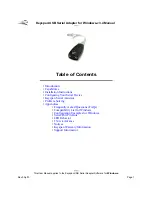
lp-548 Rev. 000 Rel. 004 Date 1.11.19
12
Value
16BIT Unit BMS
HEX BMS
Signed Decimal BMS
80.5 F
0805
325
805
Table 18 - MODBUS Positive Outdoor Temperature Conversions
Sending negative outdoor temperature from remote sensor on BMS system to appliance (40006/AV5) = -25
o
F.
Data that needs to be transmitted is: -25 X 10 = -250. 65536-250=65286 OR -250 if supported.
Value
16BIT Unit BMS
HEX BMS
Signed Decimal BMS
-25 F
65286
FF06
-205
Table 19 - MODBUS Negative Outdoor Temperature Conversions
Positive outlet temperature from System sensor connected to BMS to appliance (40007/AV6) = 155
o
F. 155
o
F x 10 = 1550.
Value
16BIT Unit BMS
HEX BMS
Signed Decimal BMS
155 F
1550
60E
1550
Table 20 - MODBUS Positive Outlet Temperature Conversions
Part 6 - Troubleshooting
A. MODBUS/BACnet Board Diagnostics
Should you encounter problems communicating over MODBUS/BAC/net, the following items should be checked in this order.
1. Physical layer
2. Communications configuration and port settings
3. Error codes
4. Appliance status / blocking / lockout codes
The MODBUS/BACnet board is equipped with three LEDs for visual diagnostics: Two yellow and one green. These LEDs are located under the
MODBUS/BACnet cover. One yellow LED (D5) is used to indicate transmission of data. The other yellow LED (D6) is used to indicate reception
of data. The green LED (D7) shows internal faults. See Figure 7 for LED
locations.
Internal Faults (Green LED):
Normal Operation = 1 second on, 1 second dim
Controller Fault = Continuously on
No Burner Control Communication = 0.5 seconds on, 1.5 seconds
off
No MODBUS/BACnet Communication = 1.5 seconds on, 0.5
seconds off
Figure 7 - MODBUS/BACnet Diagnostic LEDs
B. Physical Layer
1. Adapter and Serial Port
a. Ensure adapter is plugged into the correct four pin connector
i. It plugs into the WHITE connector on the BIC-926 control.
ii. It plugs into the BLACK connector on the BIC-928
control.
C. Communications
1. Verify controller is configured for MODBUS (AUTO or ON)
2. Confirm dipswitch 9 is in the correct position for the desired final baud rate.
3. Check baud rate (9600, 19200).
4. Check parity.
5. Check MODBUS/BACnet address.
b. Confirm dipswitch 10 is in the correct position for the desired protocol.
c. Check for terminating resistors (120 ohms) at each end of the RS-485 bus only.
2. RS-485
a. Verify the correct MODBUS communication cable (twisted pair) is being used.
b. Check A, B terminal connections and polarity
c. Check for broken wires.
d. Check all wire lengths. Are any drops too long?
e. Check proper shield grounding.
3. Network
Check that all components have power (appliance, MODBUS/BACnet adapter, gateway, BMS master).
Example for READING negative temperature values from the appliance:
To read the outdoor temperature from the appliance, do the opposite.
Read register 40006/AV5 and get 65316.
Since this value is greater than 32767, the temperature is negative. To calculate the negative value: 65536 – 65316 = 220,
then 220/10 = 22. 22 X -1 = -22
o
F.
NOTE: If your particular BMS supports DECIMAL outputs, then the desired temperature can be read and written directly.
More examples
Sending positive outdoor temperature from remote sensor on BMS system to appliance (40006/AV5) = 80.5
o
F


































